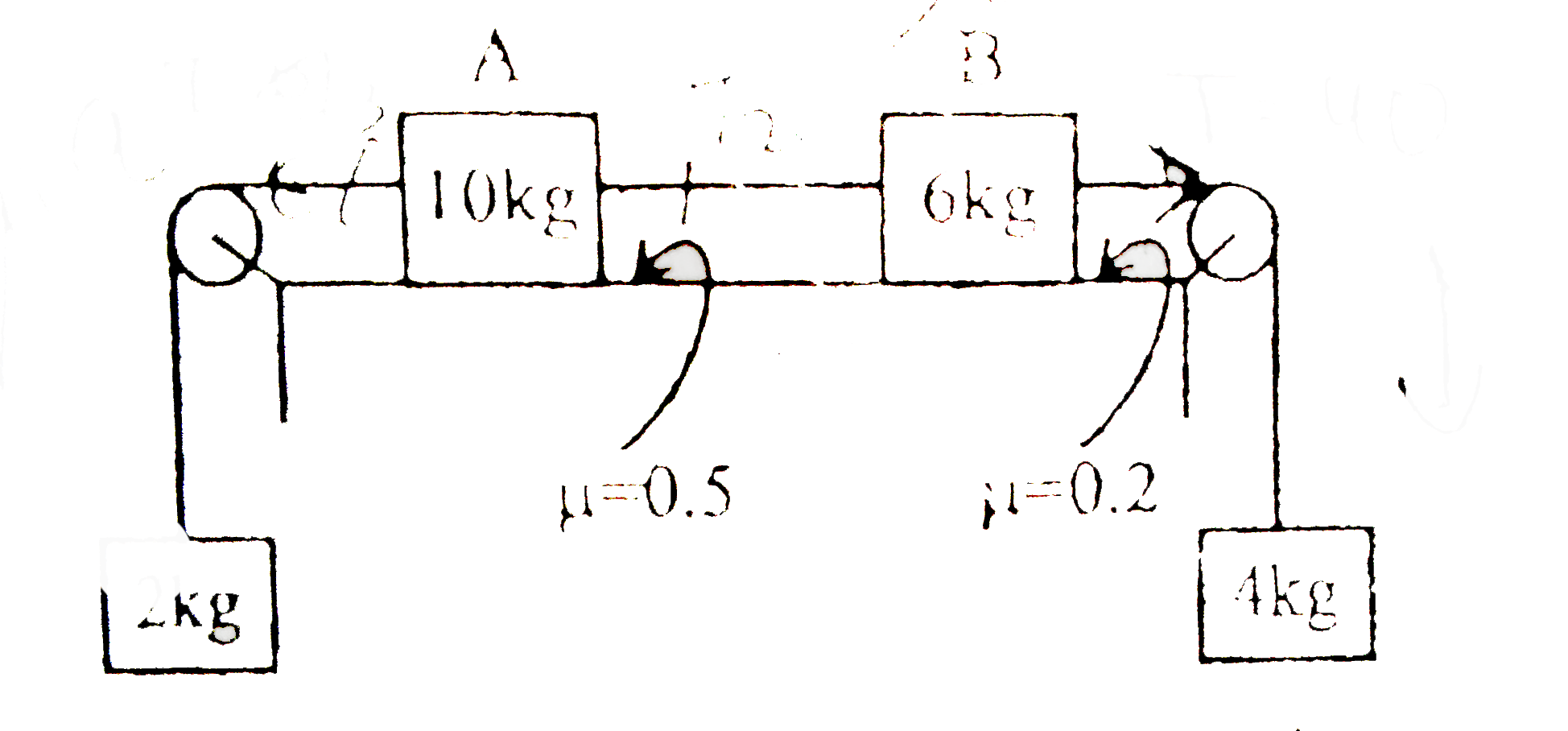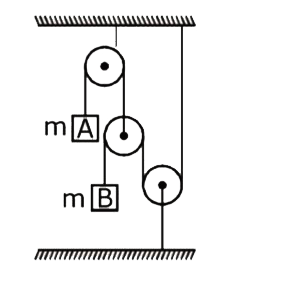Two blocks 'A' and 'B' having masses mA and ma, respectively are connectd by an arrangement shown in the figure. Calculate the downward acceleration of the block B. Assume the pulleys to be massless. Under what condition will block A have downward acceleration?

Text Solution
According to Newton 2nd Law
mBg−T=mBaB (From FBD of mB) ...1
2T−mAg=mAaA (From FBD of mA) ...2
Constraint relation
aB=2aA=a ...3
Solving equation 1, 2 & 3
aB=a=2g(2mB−mA)(4mB+mA),aA=a2=g(2mB−mA)(4mB+mA).
Block A will have downward motion if aA<0⇒(2mB−mA)<0
⇒mA>2mB
|
Topper's Solved these Questions
- LAWS OF MOTIONBOOK - FIITJEECHAPTER - LAWS OF MOTIONEXERCISE - ASSIGNMENT PROBLEMS (SUBJECTIVE) (Level-I) (Short Answer type question)
2 Videos
- LAWS OF MOTIONBOOK - FIITJEECHAPTER - LAWS OF MOTIONEXERCISE - ASSIGNMENT PROBLEMS (SUBJECTIVE)(Level-I)(Fill in the blanks)
2 Videos
- LAWS OF MOTIONBOOK - FIITJEECHAPTER - LAWS OF MOTIONEXERCISE - MATRIX MATCH TYPE
4 Videos
- KINEMATICSBOOK - FIITJEECHAPTER - KINEMATICSEXERCISE - NUMERICAL BASED QUESTIONS DECIMAL TYPE
5 Videos
- MAGNETICBOOK - FIITJEECHAPTER - MAGNETICEXERCISE - Numerical Based Type
2 Videos
Similar Questions
Knowledge Check
Find the acceleration of the block of mass m. Assume pulleys are massless and frictionless.
 Ag/3B2g3Cg2DNone
Ag/3B2g3Cg2DNoneIn an arrangement shown in the figure, the acceleration of block A and B are given-
 Ag/3,g/6Bg/6,g/3Cg/2,g/2D0,0
Ag/3,g/6Bg/6,g/3Cg/2,g/2D0,0In the arrangement shown, the pulleys and the string are ideal. The acceleration of block B is.
 Ag/5Bg/2C2g/5D2g/3
Ag/5Bg/2C2g/5D2g/3
Referring to figure calculate the downward acceleration of mass m1. Assume the surfaces are frictionless and pullyes are massless.

View SolutionIn the pulley-block arrangement shown in figure , find the relation between acceleration of blocks A and B

View SolutionIn the pulley-block arrangement shown in figure , find the relation between acceleration of blocks A and B

View SolutionIn the arrangement shown, the pulleys and strings are massless. The acceleration of block B is :

View SolutionTwo Block A and B of masses 10kg and 6kg respectively are connected through pulley as shown in figure. Find acceleration of block A.

View Solution

